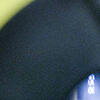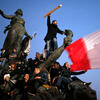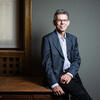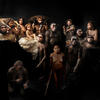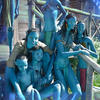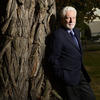You are here
Anthropology tracks the Invisible

Your research focuses on the ‘anthropology of the invisible’. How do you study something that you cannot see?
Grégory Delaplace1: In point of fact, all of anthropology focuses on ‘invisible’ objects. The study of the belief in spiritual beings has figured prominently in the discipline since the very beginning: in 1871 one of its first theorists, the British anthropologist Edward B. Tylor (1832-1917), described this belief as the common denominator of all religions, a sort of baseline of religious thinking, for which he proposed the term ‘animism’. But a great many concepts central to anthropology, including ‘culture’, ‘nature’ and ‘society’, designate invisible realities. Anthropologists have had to adopt the point of view that there are ‘invisible’ things, like culture or society, that cannot be held or seen, but whose manifestations can be studied under various circumstances of collective life. Indeed, the very essence of our discipline is to make these concepts visible as elements of the environments created and inhabited by humans, because they codify the diversity of the ways in which we conceive our world, seek to transform it and interact with it.
Could one say that your work considers the ‘visible’ and the ‘invisible’ as equally worthy of study?
G. D.: Yes, provided that we do not define the invisible as the opposite of the visible. To labour the point, one could say my research aims to lend scientific dignity to ghosts as archetypes of beings that exist because they appear – and thus to make the comparative study of their manifestations the laboratory of a new ethnography of the invisible.
In the context of what the anthropologist Philippe Descola has called ‘naturalism’, the experimental sciences have advanced our knowledge by expanding the boundaries of the visible. Beings like microorganisms and phenomena like magnetism become part of our world as they are discovered. But other types of occurrences, like ghosts, require a different kind of investigation. Through ethnography, anthropology has embraced some of these unseeable entities, like culture and society, while relegating others, including ghosts and spirits, to the status of ‘beliefs’.
The challenge for the anthropology of the invisible is to compare the diversity of things that appear in human worlds, without deciding a priori whether a given case is scientific truth or faith-based illusion.
For several years you investigated the Mongol peoples’ relations with their dead. What were your findings?
G. D.: In 1999 I started studying nomadic herders in the far northwestern part of the country and in the capital Ulaanbaatar, observing their funerary rituals and the way in which gravesites could help nurture a special relationship with a given place. Over time I also found it pertinent to document how the dead manifested their presence outside of the situations in which they were expressly summoned by the living. I tried to understand the language used to recount the appearance of that which is not visible to everyone, like ghosts.
As a result, I was able to show that the dead are at the centre of discreet practices through which herders and city dwellers uphold or reject modernist ideologies and socialise an environment populated by invisible ‘masters’. The subsequent study of graves, ghost stories and the social uses of photography led me to identify a number of procedures and little stratagems through which the dead are put forth as partners in formal or personal relations that subvert the institutional frameworks imposed by the state and the clergy. This research resulted in a thesis and a book, L’Invention des Morts (“Inventing the Dead” (in French)).(link is external)
You continued this work by studying events in 19th-century Britain…
G. D.: Through a series of happy coincidences, I was able to access the archives of a British learned society, the Society for Psychical Research (SPR), founded in London in 1882 by a group of researchers, physicists and philosophers from the University of Cambridge, with the goal of gaining an understanding of paranormal phenomena: telepathy, apparitions, ‘mediumism’, telekinesis, etc. Its investigators travelled all over England to interview witnesses to these events, as well as their friends and neighbours, even spending the night at the sites in question.



After World War II, one of the young investigators, Donald West, became sceptical, and set out to establish ‘facts’ independent from people, their subjectivity, the relationships they maintained and the influences they were subjected to. Ultimately, though, he gave up, concluding that it was impossible to distinguish in a haunted house between what might be ‘authentically paranormal’ phenomena and what was simply a result of the witnesses’ beliefs or imagination, or possibly even a psychological delusion or outright hoax.



In my book Les Intelligences Particulières (“Special Intelligences” (in French))(link is external), I re-examine West’s investigations, trying to find out what he did not seem to take seriously in what the witnesses saw. In particular, I looked into three cases of haunted houses reported between 1946 and 1948. They include the story of an old lady who saw a figure appear at the foot of her bed in the evening, and families disturbed by a variety of incongruous noises in their house at night. These cases were documented in detailed accounts and investigations, which provided material for the book.
Do you conclude that there are in fact people whose ‘special intelligence’ enables them to perceive spirits?
G. D.: Actually, the question I asked myself was not whether ghosts exist or not, but rather ‘how’ they exist. In Mongolia, for example, they manifest themselves by the ringing of bells, smells of food in the middle of the steppe or lights in the sky. In England, they most often take the form of female figures, silhouettes that materialise next to the bed, or they make themselves heard through loud knocking sounds on the walls. While they occur in different ways, interestingly, there is something ineffable about these events in all cases – they defy objective characterisation, which is very unsettling for the people who perceive them. Simply because a ghost has appeared somewhere once doesn’t mean that it becomes accessible and knowable to everyone. To make a ghost reappear after a first sighting, you need to resort to complex relational and discursive means, such as shamans in Mongolia or mediums in spiritualist Europe. It might then take shape briefly, but its tangible presence cannot be stabilised for all and still follows the rules of apparitions.



In addition, ghosts manifest themselves even to individuals who don’t believe in them, just as they do not necessarily appear to those who actively seek them out! These are things that ‘happen’, arising from a ‘special’ relationship between people (and their pets, which are often involved in these incidents) and a place. This relationship – this intelligence of place – is special because it cannot easily be extended beyond the limits of this small group. What emerges from the archives, moreover, is that it often takes form around persons whose unusual character or life story makes them capable of perceiving things that others cannot see, or see less well. They are not really mediums, or not always, but rather people endowed with a ‘particular intelligence’ of the world. As if their marginality had accustomed them to inhabiting it as foreigners, as if they were used to living differently from everyone else – and therefore to feeling what others don’t notice.
Has all this research enabled you to define the invisible?
G. D.: There are many possible definitions, depending on the way you want to use the term. If you want to characterise the invisible as an anthropological concept, that concept must make it possible to delimit a set of comparable phenomena. Concretely, if we describe the invisible as ‘that which is hidden from view’, the comparison doesn’t hold up because it designates things that are far too disparate: what do a temporarily absent person, a microscopic bacterium, the Higgs boson, a concealed object, etc., have in common? Not much…
In addition, this mixes two kinds of objects: some that can be discovered (and which cease to be invisible once they are made visible) and others that remain invisible even after being discovered. Just like ghosts, as mentioned above: simply because a spectre has appeared to us once, the fact of having been able to identify it and even communicate with it doesn’t mean that our relationship with it will be stabilised. Nor does it mean (even less so!) that we will have ‘elucidated’ once and for all the conditions of existence that govern these beings...
The notion of apparition owes a great deal to the anthropologist Elisabeth Claverie, who has studied visitations of the Virgin Mary in Bosnia-Herzegovina. Indeed, whether it be in Mongolia, England or Central Europe, in the 19th or 20th century, there is a certain homogeneity in the conditions surrounding these occurrences, even though the kind of being involved is very different. And that is what’s interesting to compare from an anthropological point of view. The question posed by anthropology of the invisible, based on this definition – i.e. the invisible as that which ‘appears’ but that cannot be definitively ‘discovered’ – is therefore an open question, calling for further investigation: what, in our world, behaves in the same way as a ghost? What unseeable things make up our human worlds? ♦
For further reading
- La Voix des Fantômes, Grégory Delaplace, Seuil, to be released (in French) in September 2024.
- Les Intelligences particulières. Enquête dans les maisons hantées(link is external), Grégory Delaplace, Vues de l’Esprit editions, Brussels, 2021 (in French).
- L’Invention des morts. Sépultures, fantômes et photographie en Mongolie contemporaine(link is external), Grégory Delaplace, EPHE (Nord-Asie 1), 2008 (in French).
- 1. Winner of the 2015 CNRS Bronze Medal, Grégory Delaplace is a research professor at the EPHE, where he holds the chair in anthropology of religion. A member of the Group Societies, Religions, Laicities (GSRL – CNRS / EPHE-PSL) and the Institut Universitaire de France (2017-2022), he is also the editor in chief of the French journal of anthropology, L'Homme.





